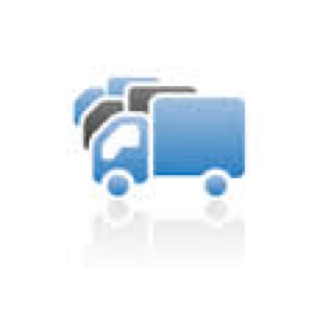Title Page
-
Conducted on
-
Prepared by
-
Location
-
What work activities have you viewed during your inspection? Add a note to respond
-
1. Evacuation and Safety Signs Posted – Are safety signs posted and up to date?<br>• PPE – Blue (Mandatory) <br>• No Access – Red (Prohibition)<br>• Fire Exits – Green (Safe Condition)<br>• Toxic Materials – Yellow (Warning)
-
2. Fire Exits and Routes Clear – Are routes clear of obstructions, obvious and properly signposted?
-
3. Fire Extinguishers – Are fire extinguishers available, signposted and easily accessible? Any the inspected up to date?
-
4. Eye Wash Stations – Is there an eye wash station available where necessary and is it easily accessible and stocked? Are bottles within their use by date?
-
5. Risk Assessments Available – Are appropriate risk assessments in place, visible, communicated and followed?<br>• Are assessments available?<br>• Do operators know where they are?<br>• Have they seen them?
-
6. Permit to Work – Are Permit to Work (PTW) in use? Are they prominently displayed? Are persons working as detailed? Is the permit clear, concise and in date and has a completion date been set?
-
7. Behavioural Aspects – Review categories, discuss findings with persons if unsafe acts observed.<br>• Reactions of People - When being observed they often change their behaviour.<br>• Personal Protective Equipment (PPE) – The use and type described in Risk Assessments and Manufacturing Methods.<br>• Positions of People – The working position they adopt could be a cause of injury.<br>• Tools and Equipment – Focus on the tools and equipment that are used ensure they are being used correctly, correct for the task and are in good condition.<br>• Procedures and Orderliness - Procedures should be followed at all times (these describe the safe system of work).
-
8. PPE Provided and Used – Is Personal Protective Equipment (PPE) available for use and is it being used where necessary?<br>• PPE (head, eyes, body, hands, feet) should be used for the right jobs, including Respiratory Protective Equipment (RPE). Check whether RPE is used and if so, if it is inspected regularly.
-
9. PPE Storage Facilities – Are there adequate facilities available for storing PPE? This could be as simple as a hook for a face shield or glasses case for safety glasses.
-
10. Local Extraction Ventilation – Is Local Exhaust Ventilation (LEV) available and used where necessary? Is LEV checked weekly?
-
11. HFL In Use – Highly Flammable Liquids (HFL) should be used in as small quantities as possible, lids should be replaced on containers immediately and sources of ignition should be controlled.
-
12. HFL Storage Inside/Outside – There should be less than 50 litres stored inside a building. 0 score if more than 50 litres, then highest score if the building holds as little as is necessary.<br>• Inside the building HFL should be in a flame proof cabinet except the small quantities required for immediate use.<br>• Quantities over 50 litres should be stored in a Flamvault, or in a bunded store which should be located outside the building. The vault or store should be signposted.
-
13. Safe Chemical Handling and Storage – Chemicals should be labelled and in clean, easily handled containers. Hazards should be highlighted.
-
14. Tools Safe Condition – Tools should not be adapted or taped up and should be in good repair.
-
15. Tools Safe Use/Storage – Are tools being used in the right way for the right job? Are there provisions for safe tool storage and is it adequate and in good condition?
-
16. Lifting Equipment – Are lifting beams marked with SWL (safe working load) and kept in good repair and are slings/shackles in good repair and identified?
-
17. Machinery Guarded – Are all machinery guards in good order and in place?
-
18. Waste Storage (Bunding) – Is waste stored safely and properly segregated where necessary with bunding used for liquid waste/drums etc.?
-
19. Waste Collection – Is waste collected on a regular basis i.e. no rubbish overflowing from bins?
-
20. Benches Free From Clutter – Is the work area free from clutter allowing room to do the job?
-
21. Paper and Documentation Organised – Is all paper and documentation tidy and appropriate to the job?
-
22. Identifiable Walkways – Are all walkways identified i.e. floor marked?
-
23. Safe General Storage – Is equipment, paperwork, finished product etc. stored tidily and safely i.e. not crammed under stairs or piled on top of cupboards?
-
24. Noticeboards Ordered and Relevant – Are noticeboards and performance measures tidy and up to date.
-
25. General Cleanliness and Condition of Floor – Is the floor extremely dirty/damaged in any areas? Are there any tripping hazards or areas where dust or dirt is able to accumulate?
-
26. General Cleanliness and Condition of Work Benches – Are benches clean and well maintained? Are there any areas where dust or dirt is able to accumulate?
-
27. General Cleanliness and Condition of Sink and Washing Areas – Are the areas hygienic/ clean?
-
28. General Cleanliness and Condition of the Walls and Shelves - Are there any holes or are shelves falling down, are they covered in dirt/grit?
-
29. Condition of Lighting – Is lighting of suitable level, not travelling from very light to dark areas and are light bulbs replaced where necessary?
-
30. Condition of Lagging - Is lagging in place where necessary and in good condition?
-
31. Building Condition Inside and Outside – What is the general building condition inside and out (- doors off hinges, gutter hanging off or windows unable to be shut) including debris lying around outside the building- if there is comment where and what.
-
Date and Time of completed inspection
-
Name(s) / job title(s) of inspection team:
-
Add signature










